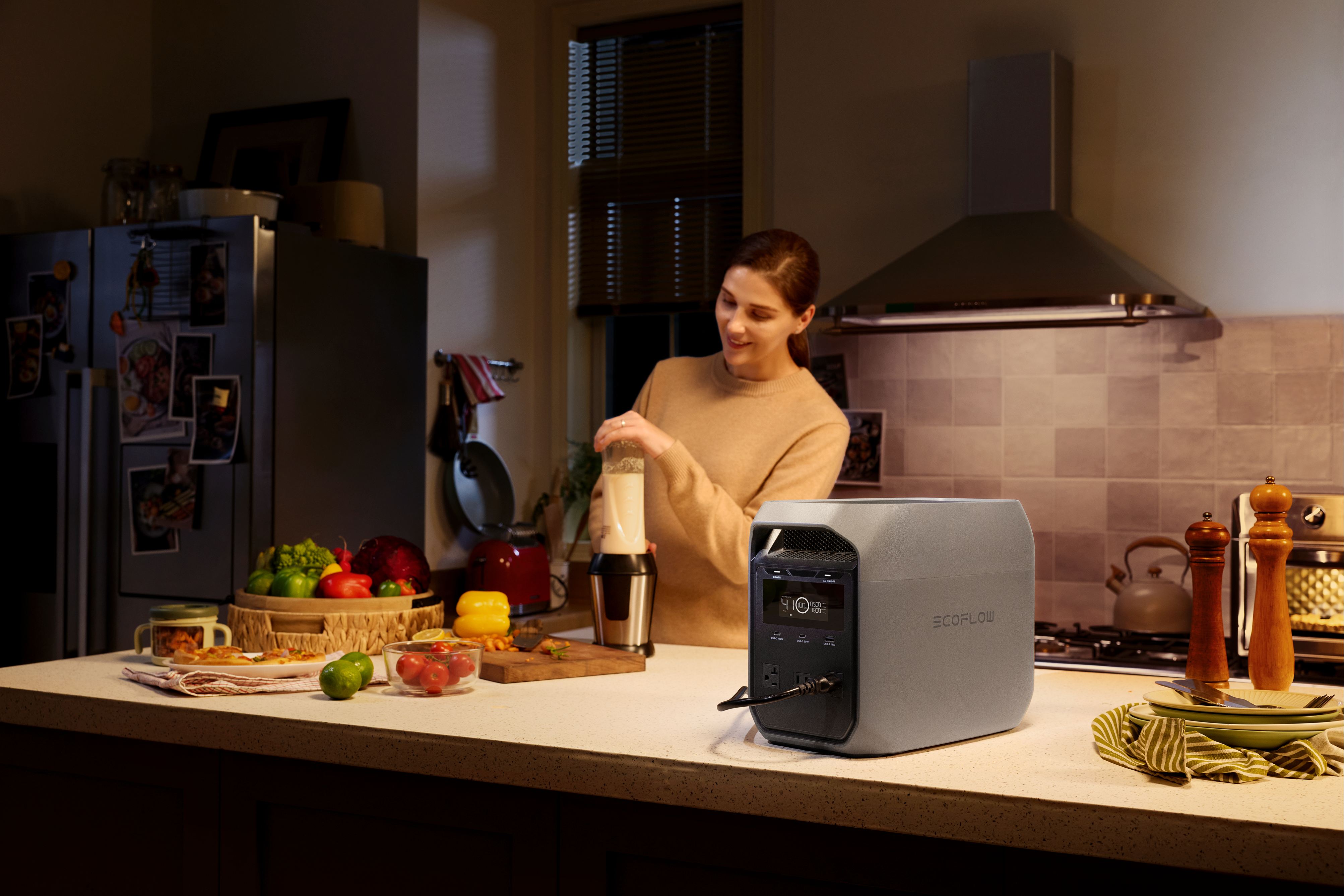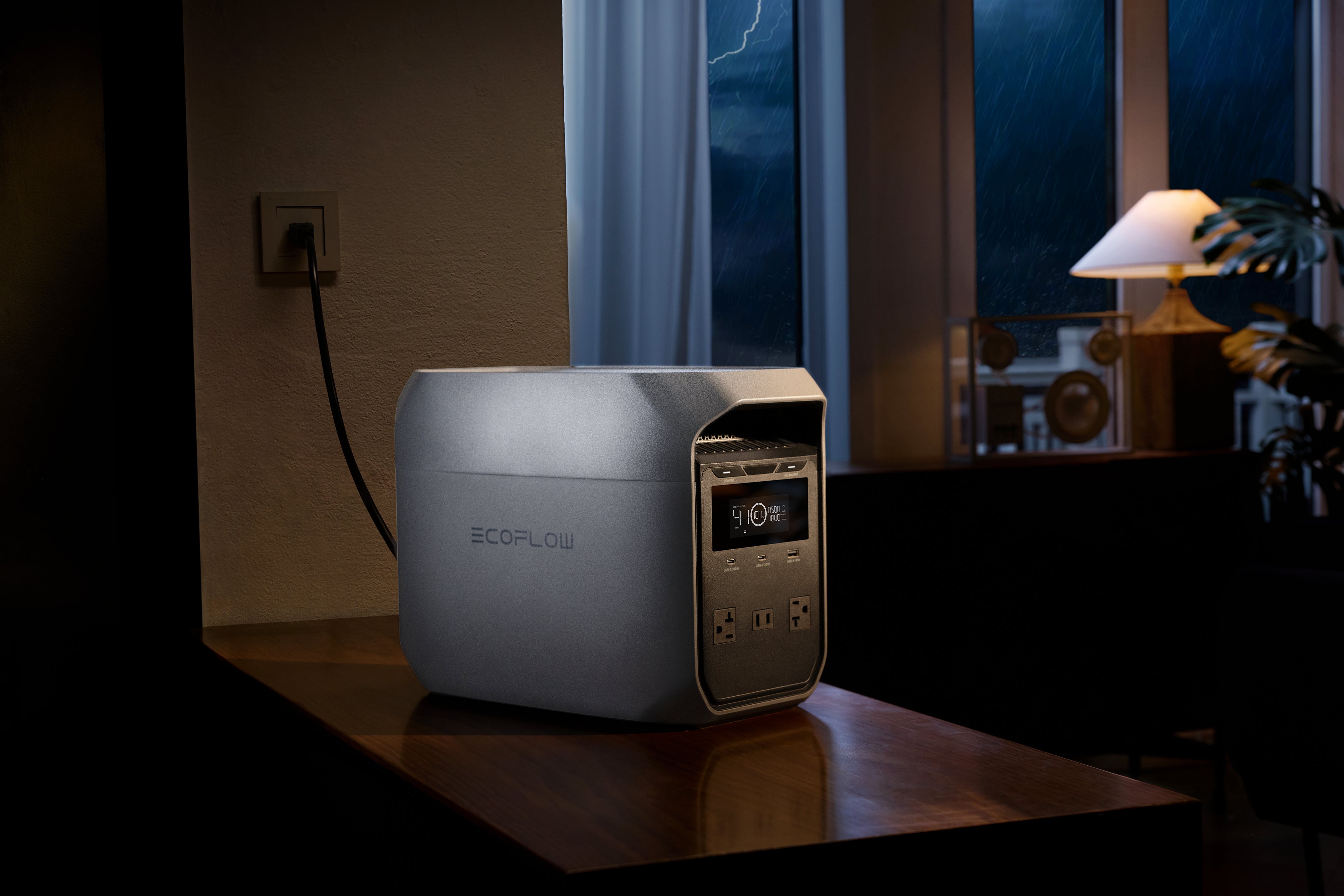How IoT Builds a Smart Home System for Your Energy Devices
- What Is a Smart Home System for Energy?
- Smart Home Control System: Core Components
- Internet of Things and Energy: Daily Coordination to Lower Bills
- Which Standards and Architectures Ensure Interoperability?
- A Phased Upgrade Path for Real-World Homes
- How to Secure a Smart Home Control System
- From Smart Home System to Grid-Interactive Home
- FAQs
Most homes add solar, a battery, an EV charger, and a few smart plugs over time. Each piece works on its own schedule, which leaves savings on the table and creates blind spots during outages. A smart home system ties these devices together so they act on the same data, the same goals, and the same rules. The result is simple to explain: lower bills, steadier comfort, and better resilience when the grid gets shaky.
What Is a Smart Home System for Energy?
A smart home system for energy is the brain that observes, decides, and then executes across all power-related gear in your house. It collects real-time measurements, learns your routines, watches prices and weather, then coordinates charging, discharging, and appliance run windows. In practice, this looks like clean priorities: self-consume solar before exporting, hold a reserve for storms, cap EV charging current during peak rates, and shift flexible loads to cheaper times. The value shows up on your bill and in the way the lights stay on when the neighborhood blinks.
Definition and Scope
Observability: sub-circuit and whole home metering, device telemetry, solar forecasts, price signals.
Control: charge and discharge setpoints, EV charging windows, HVAC, and water heating schedules.
Outcomes: cost, comfort, and uptime, tracked with clear targets.
Smart Home Control System: Core Components
A house becomes manageable when each big energy lever is both visible and controllable. The table shows what belongs in the stack and the lever each piece provides.
| Component | What It Measures | What It Controls |
| Solar Inverter | PV production, grid import/export | Curtailment, export limits, priority to self-consume |
| Home Battery | State of charge, charge/discharge power | Charge rate, discharge rate, backup reserve |
| EV Charger | Session kWh, charging rate, schedule | Amps, start/stop windows, departure time target |
| HVAC & Water Heating | Run state, temperature, tank temperature | Setpoints, time windows, pre-heat or pre-cool |
| Energy Monitor / Sub Circuits | Circuit level kW, on/off signatures | Load shedding or delay on selected circuits |
| Control Software | Tariffs, weather, alerts, priorities | Policy enforcement, conflict resolution, reporting |
Small devices matter too. Smart plugs on dehumidifiers or freezers, for example, can shift a few kilowatt hours each week without affecting daily life. The stack stays maintainable when each device describes itself in a standard way and exposes safe control points.
Internet of Things and Energy: Daily Coordination to Lower Bills
Daily coordination starts with a calendar, a weather view, and your utility’s time of use plan. The system predicts sunlight, compares it with your typical consumption pattern, and then sets rules for the next 24 hours. Morning routines get a short high-priority window for hot water and cooking. Midday solar covers laundry or dishwashing. Late afternoon peaks trigger battery discharge caps and EV current limits. If a storm alert appears, the battery reserve ratchets up before the first gust. In the United States, anchor every schedule to your local time of use windows and check simple demand response programs that reward small shifts in appliance timing.
A Practical Daily Playbook
Morning: brief comfort first mode for hot water and HVAC, then return to efficiency.
Midday: run flexible loads during PV surplus, keep the battery in a healthy mid band.
Evening peak: limit EV charging current, discharge the battery within your budgeted kWh.
Overnight: finish EV charging in the cheapest block, top the battery only if tomorrow looks cloudy.
This is where the internet of things and energy becomes tangible. Devices publish status in real time, the controller updates decisions every few minutes, and the house quietly follows the plan.


Which Standards and Architectures Ensure Interoperability?
Interoperability protects your investment because technology changes faster than roofs and panels. Look for device models that align with modern home standards, such as Matter for common appliances, messaging frameworks used by utilities for demand response, and EV charging protocols that support rate limiting and scheduling. These families of standards make devices discoverable, let them report energy attributes in a consistent schema, and expose safe commands for control. Examples include Matter for home device and energy attributes, OpenADR for demand response messaging with utilities, and OCPP for EV charging control and scheduling.
Architecture matters as much as protocols. Local control on a small hub or gateway keeps automations running when the internet drops and reduces latency for fast actions such as switching backup modes. Cloud services add forecasting and historical analysis that are hard to run on a tiny processor. A hybrid design uses local rules as the default and treats the cloud as a helper for planning, insights, and remote access.
Design Principles to Favor
Local First: rules execute on your network, with cloud as an enhancement.
Open Interfaces: clear device models and published APIs for long-term flexibility.
Fail Gracefully: if one service is down, safe defaults keep essential loads running.
A smart home system that hits these notes will integrate new hardware years from now without a rethink.
A Phased Upgrade Path for Real-World Homes
Households succeed when upgrades happen in clean phases. Each phase stands on its own and sets up the next.
Phase 1: Visibility
Install whole-home and key circuit monitoring. Identify idle draw, seasonal loads, and the few appliances that dominate your bill. Document your utility’s rate table and peak windows.
Phase 2: Control The Big Levers
Bring the battery and EV charger under policy control. Set a backup reserve, define discharge limits per day, and schedule EV charging by price block and departure time. Add water heater and HVAC setpoint automation. For renters or smaller homes, a portable power station such as the EcoFlow DELTA 3 Classic (1024Wh) can act as a controllable battery node for essentials. Use the app to monitor and schedule charging during low-rate windows, then keep key loads running during short outages.
Phase 3: Orchestrate
Create policies that balance comfort and cost. Examples include solar first self-consumption, postponing the dryer until the next PV surplus, and capping EV current during local peaks. Use reports to verify that each rule pays for itself.
Phase 4: Prepare For Programs And Permits
Check local incentives, interconnection rules, and basic demand response offerings. Some programs reward load shifting or allow customers to enroll in home batteries as flexible resources. Participation rules vary by state and utility, so keep documentation tidy and confirm that your controller can exchange the required messages.
By the end of Phase 4, you will have a smart home system that behaves predictably and generates savings you can audit.
How to Secure a Smart Home Control System
Security and privacy are part of reliability. A practical approach starts with the network and continues with identity, updates, and physical safety.
Network Segmentation
Place IoT gear on its own WiFi or VLAN. Restrict device-to-device chatter and only allow the controller to talk to each device. Use strong, unique passwords and modern encryption.
Identity and Updates
Rotate credentials on a schedule. Enable signed firmware updates and review change notes before applying them. Back up controller configurations so you can recover after a failure.
Resilience and Safety
Keep local automations that cover outages. Define a manual bypass for essential circuits. Review safe limits for charge, discharge, and EV current so rules never exceed what the hardware can handle.
Treat security as continuous hygiene. Small habits prevent most issues and protect the savings your system produces.
From Smart Home System to Grid-Interactive Home
A house that understands its own generation, storage, and flexible loads becomes easier to live with and cheaper to run. The smart home system you build today can remain simple at first, then grow toward grid interaction as programs mature in your area. Make visibility your first step, then move the biggest levers into policy control, and let your controller coordinate the ordinary jobs that quietly drain a bill. The rest follows: steadier comfort, fewer surprises during storms, and a clear path to participate in the modern grid when it makes sense.


FAQs
Q1. What’s a quick way to estimate payback for a smart home system?
List flexible loads you can shift each week, then multiply expected shifted kilowatt-hours by the price difference between peak and off-peak blocks. Add avoided outage costs if you value uptime for work or medical devices. Subtract software, maintenance, and financing. A simple spreadsheet with monthly tracking gives you a realistic payback window you can defend.
Q2. I rent or live in a condo. What can I deploy without permits?
Use clamp-on subcircuit monitors, smart plugs with energy reporting, and a portable power station for essential devices. These options avoid panel work and usually fit lease rules. Schedule EV charging through the charger’s app if you have assigned parking. Keep a written inventory of controlled loads so you can remove everything cleanly when you move.
Q3. How do I size backup runtime for critical circuits?
List each device, note watts, and multiply by the hours you need to run. Sum to get required kilowatt-hours, then add a buffer for the inverter and temperature losses. Check each device’s start-up surge so you do not overdraw. If your battery shows a state of charge, test a short outage at a safe time to verify assumptions.
Q4. How should I bring utility rate data into automations?
Confirm your exact time-of-use schedule from the utility portal. If an API or CSV is offered, import it and set effective dates. When rates change, update the controller and keep the old table for audits. Add guardrails such as a maximum daily discharge budget and a floor for state of charge, so errors never risk comfort.
Q5. Do I need a data and privacy plan for home energy data?
Yes. Decide what to store, for how long, and who can access it. Prefer local logs with periodic exports. Use separate credentials for each device, enable signed firmware updates, and rotate keys on a schedule. If you share data with a utility or aggregator, review their retention and deletion policies so the arrangement fits your household’s comfort level.